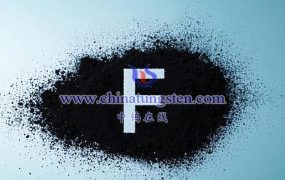
While tungsten oxide pseudocapacitor materials have extensive potential applications in various fields, they also exhibit some significant drawbacks. The main disadvantages of tungsten oxide pseudocapacitor materials are as follows:
- Poor Electrical Conductivity
Tungsten oxide (especially tungsten trioxide, WO₃) typically has poor electrical conductivity, which limits its electron transport efficiency and negatively affects the performance of energy storage devices like supercapacitors. Poor conductivity means that during charge and discharge, the electron transfer speed within the electrode material is slow, leading to increased internal resistance and energy loss.
- High Recombination Rate of Photogenerated Electrons and Holes
In photoelectrocatalysis applications, the nanostructured tungsten trioxide suffers from a high recombination rate of photogenerated electrons and holes. This causes the photogenerated electrons and holes to recombine quickly, preventing them from effectively participating in the photoelectrocatalytic reaction and reducing the photocatalytic activity. The high recombination rate is a major limitation for tungsten trioxide’s application in photoelectrocatalysis.
- Relatively Low Energy Density
Despite the potential for high specific capacitance and energy density, tungsten oxide pseudocapacitor materials still have relatively low actual energy density compared to some advanced energy storage materials. To enhance the energy density of tungsten oxide-based materials, researchers often need to composite them with other materials or optimize their structure to improve performance.
- Susceptibility to Photocorrosion
In processes like photoelectrocatalytic water splitting, tungsten trioxide is subject to strong photocorrosion due to the formation of peroxide sites. This photocorrosion can adversely affect the material’s structure and performance, reducing its stability and lifespan. Therefore, measures must be taken to mitigate or avoid photocorrosion in photoelectrocatalysis applications.
- Complex Preparation Process
Although there are various methods to prepare tungsten oxide materials, achieving high-performance tungsten oxide pseudocapacitor materials often requires complex preparation processes and precise control conditions. This increases the preparation costs and complexity, which limits large-scale production and widespread application.
Conclusion
In summary, tungsten oxide pseudocapacitor materials face several drawbacks, including poor conductivity, high recombination rate of photogenerated electrons and holes, low energy density, susceptibility to photocorrosion, and complex preparation processes. To overcome these limitations and fully harness their advantages, researchers are continuously exploring new preparation methods and modification strategies to enhance the performance and application range of tungsten oxide pseudocapacitor materials.
More details of tungsten oxide product, please visit website: tungsten-oxide.com
Please contact CHINATUNGSTEN for inquiry and order of tungsten oxide:
Email: sales@chinatungsten.com
Tel.: 86 592 5129595






